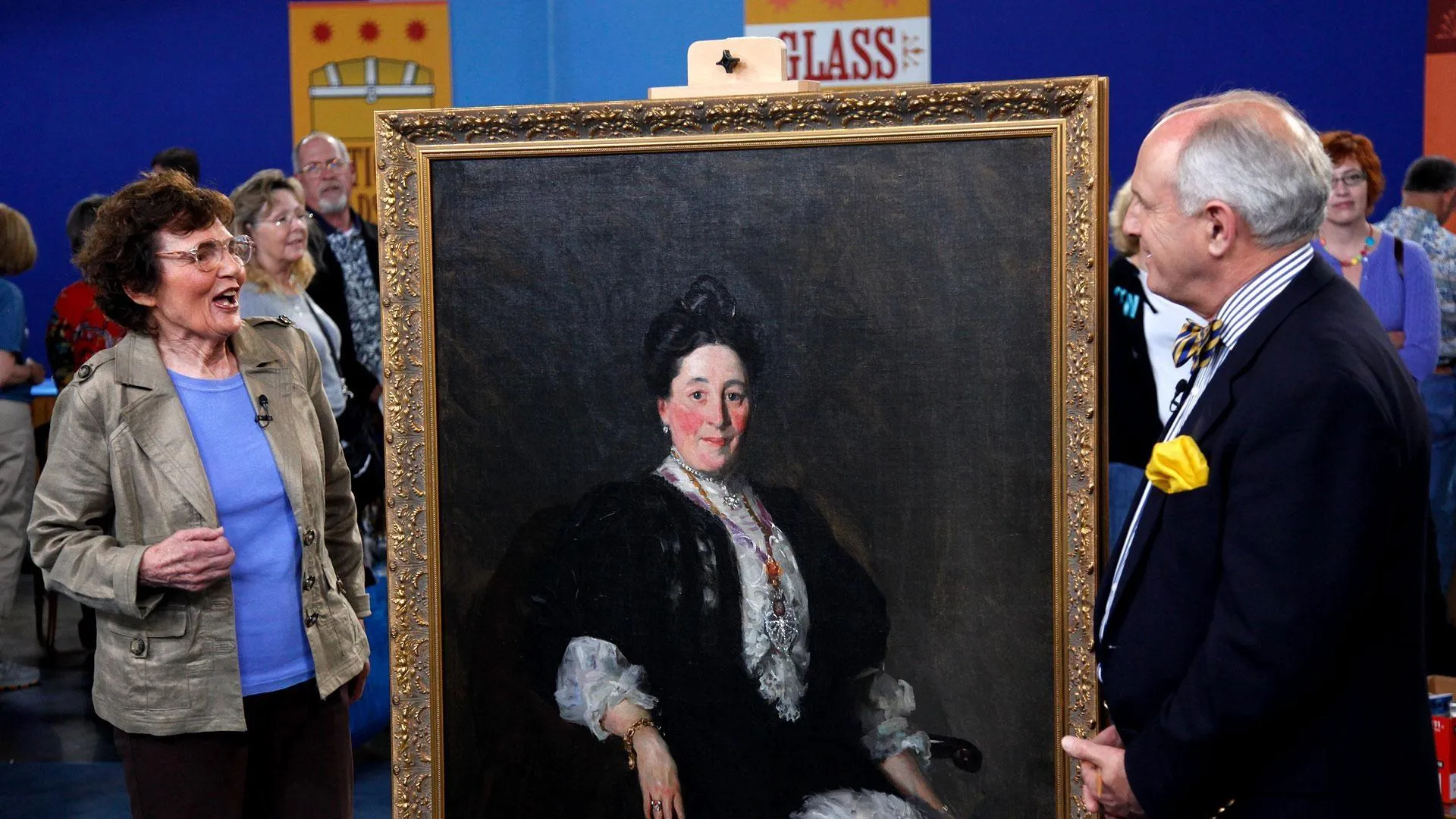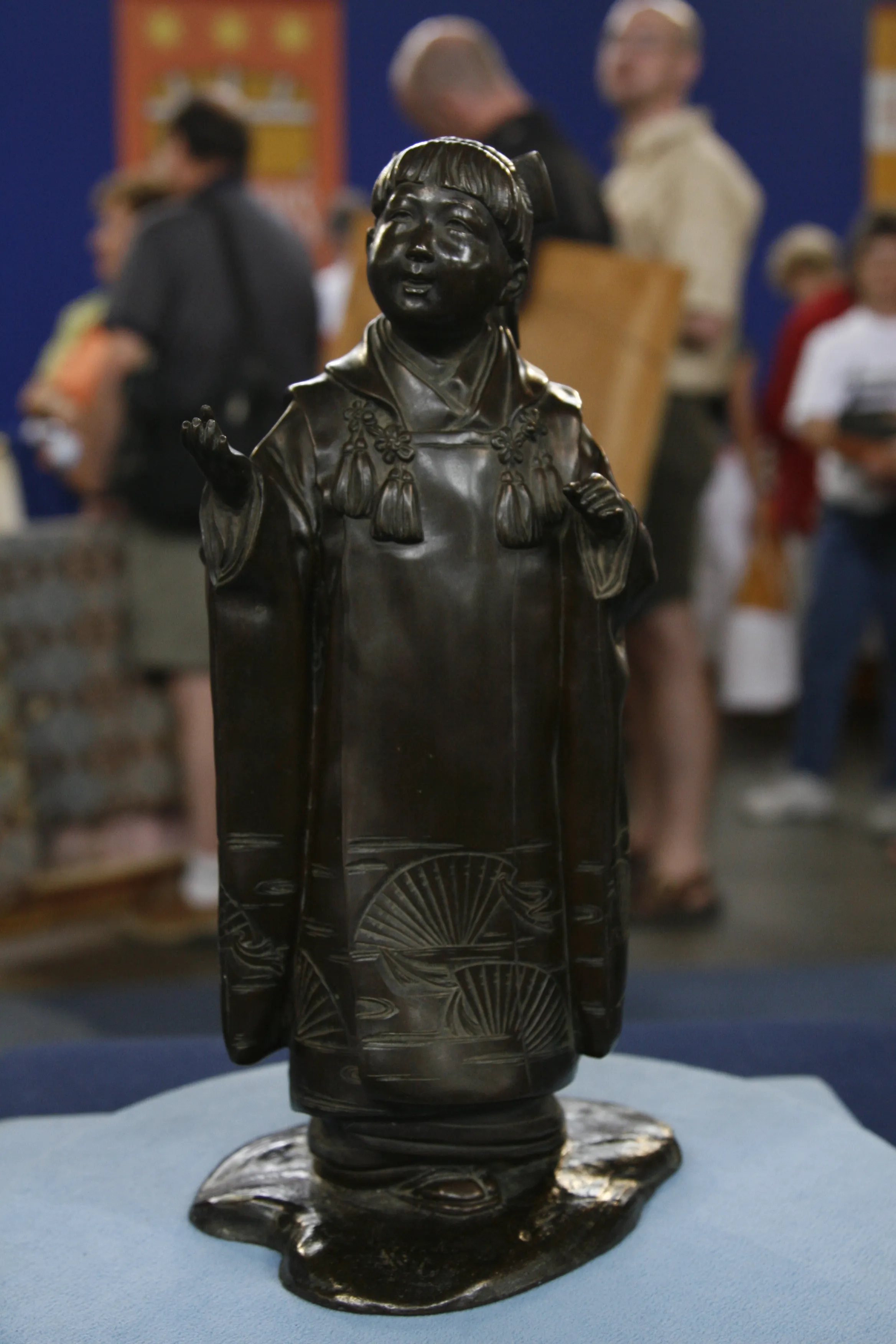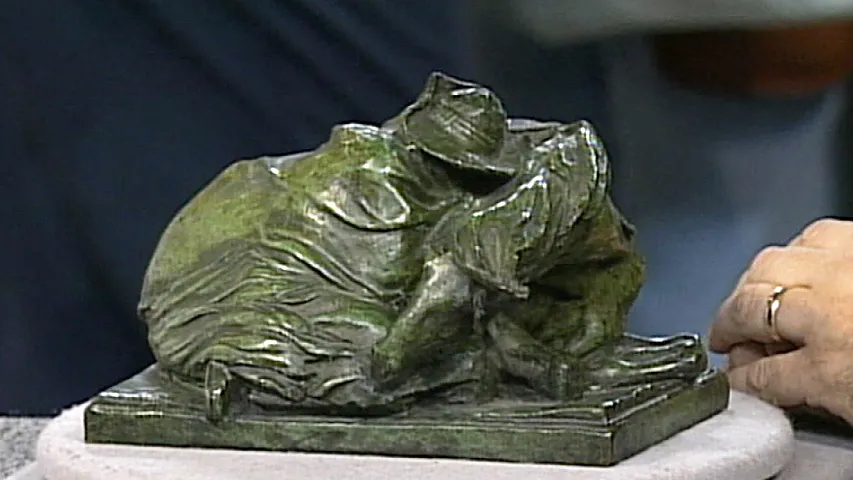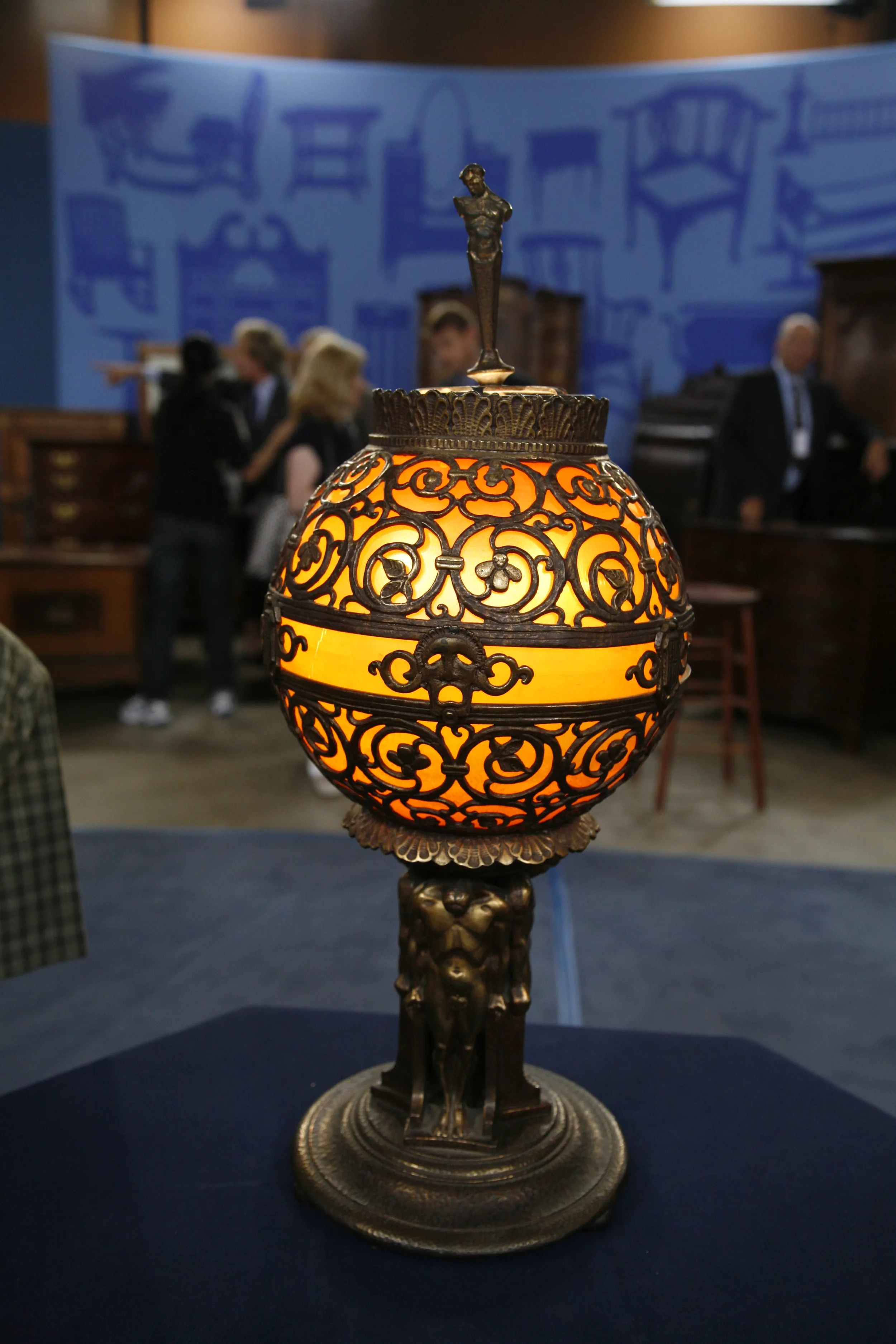GUEST: I bought it at auction back in Manassas, Virginia, outside of Washington, D.C., at an auction many, many years ago. I don't even know the exact year.
APPRAISER: Do you have any idea what you paid for it?
GUEST: Probably $200, but I'm not positive of that. It wasn't much more than that.
APPRAISER: And what do you think it is?
GUEST: It's a Tiffany lamp.
APPRAISER: And why do you think it's Tiffany?
GUEST: Because it has it written up here on the inside and it's on the bottom of the brass piece, too.
APPRAISER: Okay. I'm going to take the shade off the base. I'm wearing my glasses especially so that nothing happens. And there is a Tiffany signature here. And it's a fake signature.
GUEST: It is a fake signature?
APPRAISER: It's a fake signature.
GUEST: You're kidding.
APPRAISER: I'm not kidding. But there's another marking on it. That's the real signature.
GUEST: Oh, for heaven's sake.
APPRAISER: That's the real signature.
GUEST: Okay.
APPRAISER: This is a very early Tiffany lamp. It was made probably the late 1890s, and it was made for fuel. It was not made for electricity. The reason why you have the wide opening in the shade is because it had to accommodate the chimney that you have. Later on, as they electrified these lamps, the openings got smaller because they didn't have to put the chimney through it. At the time that these types of shades were being blown in the glass factory that Tiffany owned in Corona, Queens, they didn't necessarily sign the shade "Louis C. Tiffany Favrile," as you saw it. You just wouldn't see that on an early shade. What you would see is this prefix letter that you see right here. It's says "S" with a number on it. And that's all you would see. But whoever owned this lamp at some point thought that wasn't good enough. Now, a secure Tiffany collector would have no problem with that because they would know that that meant that the lamp was made in the 1890s...
GUEST: Okay…
APPRAISER: … and that it was original. The other part about this lamp, though, which is a bit of an issue, is that it's been stripped. And really the finish probably was more along the lines of a brown finish. But it's been taken off over the years, probably before you bought it.
GUEST: Yes.
APPRAISER: And what you see is someone really had a good time cleaning this and got a little crazy.
GUEST: I didn't touch it with anything because I didn't know if there was something I should...
APPRAISER: I had a feeling you didn't do anything and you shouldn't do anything. I want to show you that this is actually a real Tiffany signature, as is the signature on the underside here. That is also real. Now, unfortunately, this is not a very good conversion. These actually might be original Tiffany components, but I don't know what they did. But you see they've been sort of soldered together and put together.
GUEST: Well, they wanted to electrify it.
APPRAISER: Yes, they did. And I can understand that. There's a good reason to do that, but that does affect the value of the lamp, both the fact that the finish is gone and you do have that fake signature. I have to take these things into account when putting a price on the lamp. In today's market, the lamp, as it is, in a retail store, would sell for around $5,000.
GUEST: Oh, good.
APPRAISER: Most of the value is in the shade, which is a lovely shade. Now, if it were in perfect condition, it would be $15,000.
GUEST: Oh, wow. That's wonderful.











